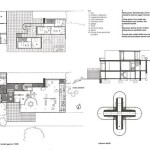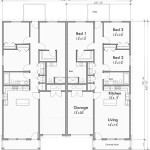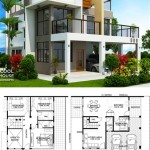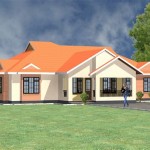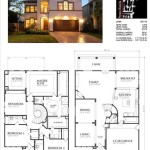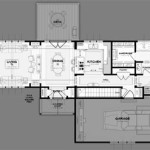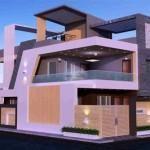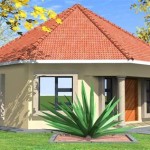Lake House Plans With A View: Designing for Optimal Waterfront Living
The allure of lakeside living is undeniable. The tranquility of the water, the picturesque scenery, and the opportunity for recreational activities draw many to seek homes nestled along the shoreline. When designing a lake house, maximizing the view becomes a central focus. Lake house plans with a view necessitate thoughtful consideration of site orientation, architectural style, window placement, and outdoor living spaces to fully capture the beauty of the surrounding environment. The development of these plans also mandates careful adherence to local building codes and environmental regulations to ensure the structure is both aesthetically pleasing and environmentally responsible.
The process of creating lake house plans with a view begins with a comprehensive site analysis. This assessment includes evaluating the topography, prevailing wind patterns, sun exposure, and the existing vegetation. Understanding these elements is crucial for determining the optimal placement of the house on the lot. For example, a steeper slope might necessitate a multi-story design with walkout basements, while a flatter lot could accommodate a sprawling, single-story structure. The direction of the prevailing winds can inform the placement of windows and outdoor living areas to minimize exposure to harsh weather. Furthermore, the amount of sunlight the site receives will influence the choice of building materials and the design of shading elements such as overhangs and awnings.
Beyond site analysis, the architectural style of the lake house plays a significant role in how the view is framed and enjoyed. A variety of styles, from rustic cabins to contemporary designs, can be adapted to maximize views. The selection of the appropriate style should complement the surrounding landscape and reflect the homeowner's preferences. Log homes, for instance, offer a natural aesthetic that blends seamlessly with wooded settings. On the other hand, modern homes with clean lines and expansive glass walls can provide unobstructed panoramic views. The architectural style also dictates the type of roofing, siding, and other exterior materials, all of which should be selected for their durability and aesthetic appeal in the lakeside environment.
Maximizing Views Through Strategic Window Placement
The strategic placement of windows is paramount in lake house plans with a view. Windows serve not only as sources of natural light but also as frames that capture and showcase the surrounding landscape. Large windows, such as picture windows and sliding glass doors, are commonly used to provide expansive views of the lake. The size and location of these windows should be carefully considered to maximize the view while also maintaining privacy and energy efficiency. Placement should also take into account the direction of the sun's rays at different times of the day to avoid excessive glare and heat gain. Tinted windows or window treatments can be used to mitigate these effects. The use of clerestory windows, which are placed high on the walls, can bring in natural light while maintaining privacy from neighboring properties.
The type of window selected is also crucial. Energy-efficient windows, such as those with double-pane or triple-pane glass, are essential for reducing heating and cooling costs. Low-E coatings can further improve energy efficiency by reflecting solar heat away from the house. Casement windows, which crank open, can provide excellent ventilation and unobstructed views. Awning windows, which hinge at the top, can be left open during light rain, allowing for fresh air circulation. The placement and type of windows should be carefully coordinated to create a balance between aesthetic appeal, functionality, and energy efficiency.
Furthermore, the use of window walls, which consist of a series of interconnected windows, can create a seamless transition between the interior and exterior spaces. Window walls can be particularly effective in living rooms and dining areas, allowing homeowners to enjoy panoramic views while entertaining guests. The design of window walls should take into account the structural integrity of the building and the need for adequate support. The frame materials for windows also contribute to the overall aesthetic and durability. Wood frames offer a classic look, while aluminum and vinyl frames are more resistant to moisture and require less maintenance.
Designing Outdoor Living Spaces to Enhance the Lakeside Experience
Outdoor living spaces are an integral part of lake house plans with a view. Decks, patios, and porches provide opportunities to enjoy the natural surroundings and engage in outdoor activities. The design of these spaces should be carefully integrated with the interior layout of the house, creating a seamless flow between the indoor and outdoor areas. A spacious deck or patio can serve as an extension of the living room, providing a comfortable area for relaxing, dining, and entertaining. The orientation of the outdoor living spaces should be chosen to maximize the view and optimize sun exposure. For example, a west-facing deck might be ideal for enjoying sunset views, while an east-facing patio might be perfect for morning coffee.
The materials used for outdoor living spaces should be durable and weather-resistant. Composite decking is a popular choice because it is resistant to rot, insects, and weathering. Natural wood decking, such as cedar or redwood, offers a classic look but requires regular maintenance. Patios can be constructed from a variety of materials, including concrete, brick, and stone. The choice of material should complement the architectural style of the house and the surrounding landscape. The addition of features such as pergolas, awnings, and outdoor fireplaces can enhance the comfort and usability of outdoor living spaces.
In addition to decks and patios, a well-designed lake house plan might also include a screened porch. Screened porches provide a comfortable and bug-free environment for enjoying the outdoors. They can be particularly useful in areas with high populations of mosquitoes and other insects. The design of a screened porch should take into account the flow of air and the need for adequate ventilation. The use of ceiling fans can help to circulate air and keep the space cool. The placement of the screened porch should also be carefully considered to maximize the view and minimize exposure to harsh weather.
Integrating Sustainable Design Practices
Sustainable design practices are increasingly important in lake house plans. Minimizing the environmental impact of the house is crucial for preserving the natural beauty of the lakeside environment. This involves incorporating energy-efficient technologies, using sustainable building materials, and conserving water resources. The use of solar panels can provide a renewable source of energy, reducing the reliance on fossil fuels. Geothermal systems can provide efficient heating and cooling, further reducing energy consumption. Energy-efficient appliances and lighting can also contribute to a lower carbon footprint.
The selection of building materials should also prioritize sustainability. Reclaimed wood, bamboo, and recycled content materials are all environmentally friendly options. These materials not only reduce the demand for virgin resources but also offer unique aesthetic qualities. The use of low-VOC paints and finishes can improve indoor air quality and reduce the risk of harmful emissions. The design of the house should also take into account the potential for rainwater harvesting. Rainwater can be collected and stored for use in irrigation and other non-potable applications, reducing the demand for municipal water.
Protecting the water quality of the lake is also a critical consideration. Erosion control measures should be implemented during construction to prevent sediment from entering the lake. The use of permeable paving materials can reduce stormwater runoff and allow rainwater to infiltrate into the ground. Septic systems should be properly designed and maintained to prevent pollution of the lake. The planting of native vegetation can help to stabilize the shoreline and provide habitat for wildlife. By integrating sustainable design practices, lake house plans can minimize their environmental impact and ensure the long-term health of the lakeside ecosystem.
Developing a comprehensive lake house plan with a view requires careful consideration of numerous factors, from site analysis to architectural style, window placement, outdoor living spaces, and sustainable design practices. By addressing these elements thoughtfully and systematically, it is possible to create a beautiful and functional lake house that maximizes the enjoyment of the waterfront environment while minimizing its environmental impact.

Affordable And View Worthy Lake Homes Dfd House Plans Blog

4 Important Considerations For Lake Front Home Plans

Lake View Home Plan 59196nd Architectural Designs House Plans

4 Important Considerations For Lake Front Home Plans

The Perfect Lake House Designs For Your Lot Don Gardner Architects

Lakeview House Construction Plans Open Plan Design Modern

Appalachia Mountain A Frame Lake Or House Plan With Photos Plans Rustic

Traditional Home Perfect For The Lake 59200nd Architectural Designs House Plans

Lake House Designs And More Blog Eplans Com

Best Lake House Plans Waterfront Cottage Simple Designs

